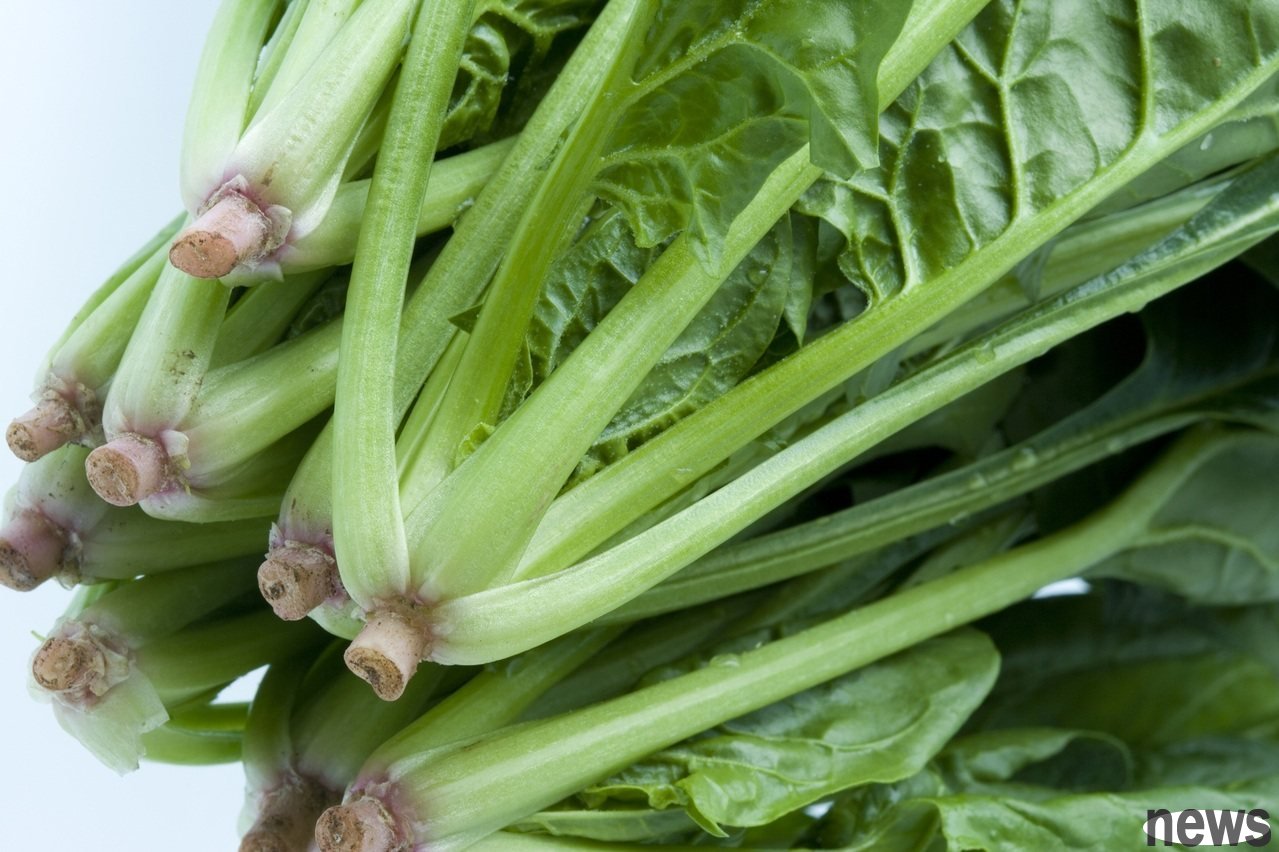Spinach is an indispensable home-cooked dish on the autumn and winter table. The brighter and shorter the red petioles of spinach are, the fresher and sweeter they are, and the roots are the most nutritious part. They can be cooked and eaten togethe...

Spinach is an indispensable home-cooked dish on the autumn and winter table. The brighter and shorter the red petioles of spinach are, the fresher and sweeter they are, and the roots are the most nutritious part. They can be cooked and eaten together after cleaning. It would be a pity not to eat them if they are cut off.
When choosing spinach, it is better to have slightly thicker leaves and bright green leaves.Spinach is also known as spinach and red root. The main production period is autumn and winter, and the peak production period is from November to February. Spinach is not only delicious, but also rich in nutrients such as iron, vitamin C and folic acid. It is an indispensable vegetable choice on the winter table. The Agricultural and Food Administration pointed out that due to the cool climate in December, spinach leaves are particularly tender and green, and their sweetness and nutritional value reach their peak. There are two main varieties of domestic spinach, including "horn-leaf spinach" with thinner leaves that is mostly grown in autumn and winter, and "round-leaf spinach" with thicker leaves that is mostly grown in spring and summer. When purchasing spinach, it is better to have slightly thicker leaves and bright green leaves. Pay attention to the following tips to choose the freshest spinach.
Select spinach 3 steps. Leaf color: Choose leaves that are fresh and emerald green with no yellow spots.
. Petiole thickness: The brighter and shorter the red petiole at the root is, the fresher and sweeter it is.
. Texture: Gently pinch the leaves with your hands, they feel soft and elastic.
Six major benefits of spinach. The roots are the most nutritious.Spinach, the "King of Vegetables", contains calcium, iron, beta-carotene and other nutrients. Experts point out that it has six major benefits. But some people just don't like to eat spinach because spinach has a "astringent" teeth-grinding feel. The Agri-Food and Food Administration pointed out that if you want to "de-astringent" spinach, you can blanch it first and then cook it, and the problem can be solved.
Spinach contains calcium, iron, protein, beta-carotene and other nutrients. The protein content of 500 grams of spinach is approximately equal to 2 eggs. The vitamin C content is among the best among vegetables, so it is known as the "King of Vegetables". Among them, the roots are the most nutritious part, but many people just cut off the roots and throw them away when washing vegetables. It is a pity. The roots can be brushed clean with a soft-bristle brush, soaked in water and washed, and then cooked and eaten together with leafy vegetables. But if you really don’t want to eat the roots, cut off 1 cm and then soak them.
Even foreign nutritionists also recommend spinach. "Health.com" once compiled six major benefits of spinach and recommended that everyone eat more in winter.
Six benefits of spinach1. Contains vitamin K and other rich nutrients
2. Rich in antioxidants
3. Prevent chronic diseases
4. Maintain brain health
5. Control blood pressure
6. Protect eye health
How to remove the "astringent" taste of spinach?Some people don’t like to eat spinach because spinach has a “astringent” texture and makes them feel like they are biting their mouths and grinding their teeth.
The Agricultural and Food Administration pointed out that there is a way to "de-astringent" spinach. As long as you blanch spinach first and then cook it, most of the oxalic acid can be effectively removed, and there will be less of a "astringent" feeling.
3 tips to remove herbic acid, remove astringency, and preserve fresh greens1. Preserve color
Boil boiling water and add a little salt and salad oil
2. Blanch
Blanch the vegetable leaves over low heat for 15-20 seconds, and blanch the stems over medium heat for 30 seconds.
3. Cool
After blanching, soak in ice water for a crispier texture. Drain and set aside for another dish.
If you insist on eating spinach in autumn and winter, you will feel three obvious changes in your body.According to "Sohu", if you insist on eating spinach in autumn and winter, you will feel some changes in your body within a month or two.
1. The complexion becomes better and the risk of anemia is reduced.
2. Improvement of liver function. The polyphenols and antioxidants in spinach help the body detoxify and relieve autumn liver fire.
3. The immunity of people who are prone to colds gradually increases.
How to eat spinach?But many people eat spinach without seeing any results. Cooking errors are a big problem. Spinach stirred warmly and stir-fried quickly can best preserve folic acid. Long-term stewing can easily lose nutrients. Drain as much as possible after blanching to reduce the loss of folic acid and trace elements.
Nutritionists also suggest that spinach can be eaten with foods rich in vitamin C. For example, spinach can be mixed with tomatoes and lemon juice. Vitamin C can help absorb iron and enhance the blood-replenishing effect.